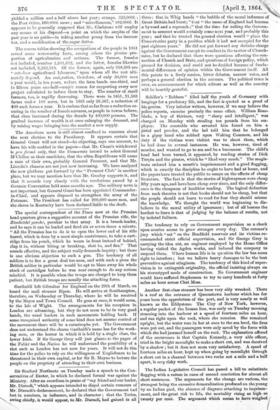The census tables showing the occupations of the people in
1861 reveal some noteworthy facts, among others the precise pro- portion of agriculturists and artisans. The former, females not included, number 1,611,652, and the latter, females likewise not included, 3,262,510. Of the former, again, only 958,285 are "out-door agricultural labourers," upon whom all the rest ulti- mately depend. An emigration, therefore, of only 30,000 men a year would, in ten years, reduce the farm hands one-third, and in fifteen years one-half—ample reason for supporting every new project calculated to induce them to stay. The number of small farmers, too, is rapidly decreasing. There were in 1851, 31,583 farms under 100 acres, but in 1861 only 26,567, a reduction of 400 such farms a year. It is curious that so far from a reduction oc- curing in the number of female servants, as people in towns believe, that class increased during the decade by 400,000 persons. The gradual increase of wealth is at once enlarging the demand, and by raising wages bringing into the market a new supply.


































 Previous page
Previous page